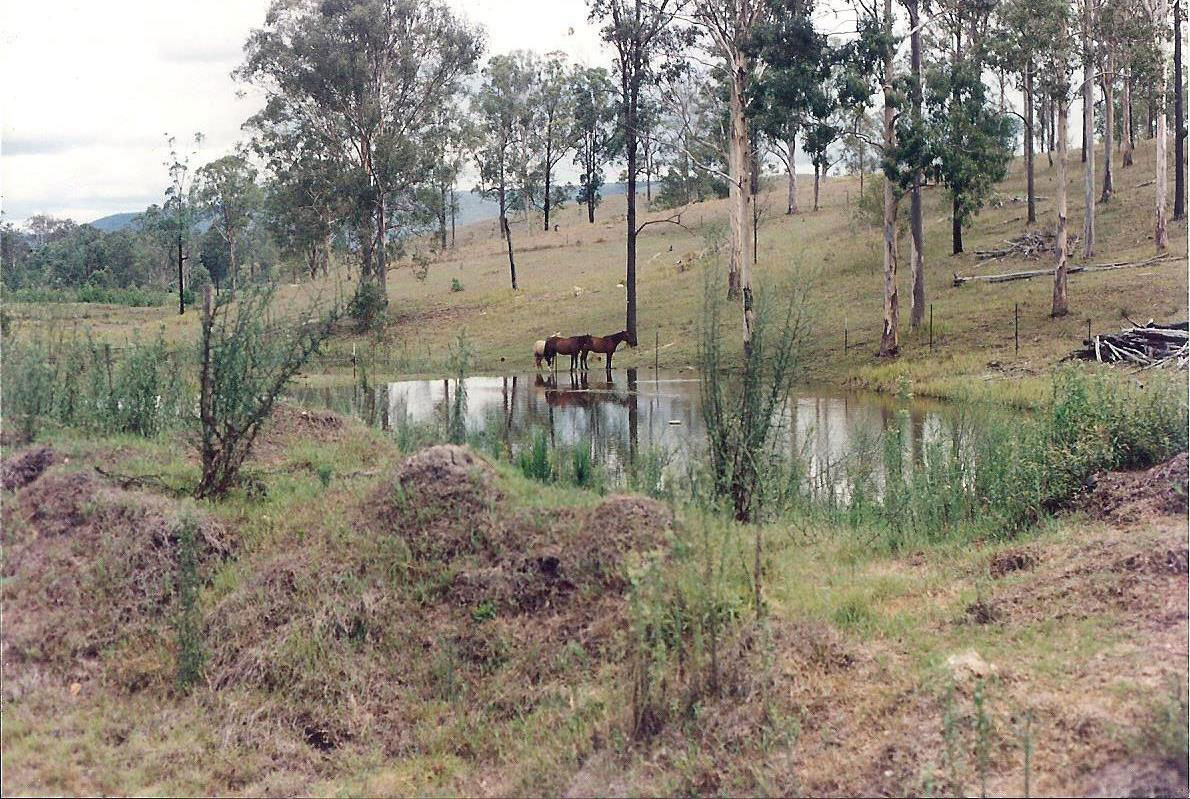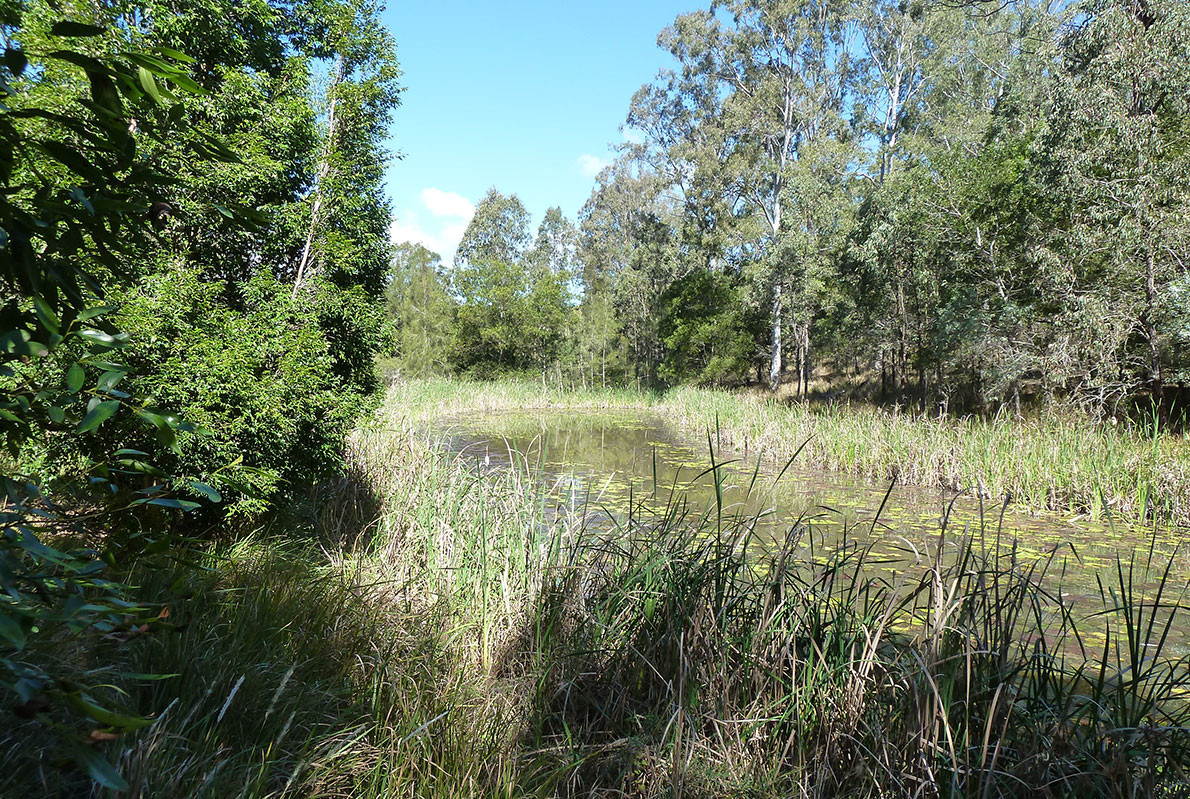“It helped a lot to have a vision of the anticipated outcome.”
My property, “Mt. Marysmokes” had a recently excavated dam in a minor watercourse when I purchased it in 1994. It was so new there were piles of clay covered in scotch thistles, and no other vegetation except mature Eucalyptus tereticornis on the nearby slope. The dam is spring fed.
It seemed wrong to have a beautiful body of water with no vegetation, which could provide habitat for wildlife, so I set about revegetating within the first week of ownership.
I cut down the thistles and burnt them to prevent further seeding. Then I planted as many Eucalypts, Brushbox (Lophostemon confertus), Three-veined Laurel (Cryptocarya triplinervis), Silky Oak (Grevillea robusta) and Acacias as I could on the mounds. Then I bought various Callistemons, Melaleucas, Casuarinas, hop bush, sandpaper gs to plant as well.
Below the dam was an almost permanently saturated clay bog into which the horses sank almost to their knees. This was fenced off with a small amount of nancial assistance from Upper Brisbane Regional Landholder Grants Project.
More trees were purchased for this boggy area with the same funding. I did not try to use local indigenous species exclusively because there weren’t many around to use as guide. I chose plants that could grow in soggy acidic soils to try to eventually lower the water table. Species used included Banksia robur, various Casuarinas, Melaleucas, Leptospermums and Callistemons. This area was then connected to another earth dam downstream that has also been planted in a similar fashion.
I had a vision of this area eventually becoming a forest full of flowering trees and shrubs, and this has now become reality. In spring, this area is teeming with honeyeaters, bees, beetles and butterflies all swarming on the red and cream blossoms.
As the planted trees slowly grew through many years of drought (no soggy ground in sight) and laborious watering, other local species began to colonise, from rushes around the dam, to Eucalypts. The natural revegetation around and in the dam has been amazing. Nothing was planted – it just came with the wildlife. A wonderful lesson in letting nature take care of herself when given a chance.
The wildlife has moved in and is always changing with the seasons and what is flowering. The bird life is very diverse such as swamp hens, coots, wood ducks, whistling ducks, hardheads, Pacific Black Ducks, cormorants, spoonbills, egrets, herons, ibis, Pacific Bazas, Whistling
Kites, Pale-headed Rosellas, lorikeets, honeyeaters, Eastern Spinebills, friarbirds, king shers, kookaburras, peewees, Willie Wagtails, Grey Fantails, Restless Flycatchers, magpies, butcherbirds, Golden Whistlers, Brown Warblers, Rainbow Bee-eaters, finches, wrens, Grey-crowned Babblers, robins and Grey Shrike Thrushes.
Red-necked Wallabies now camp under the Casuarinas during the day. There are water rats, turtles, keelbacks and other snakes, water dragons and numerous small fish.

(Before:) The boggy, degraded dam in 1994.

(After:) The same dam in 2014 – now a diverse, thriving wetland.
Unless there has been excessive rain, the once barren and boggy at is now solid ground with a beautiful forest and water reeds around and on the dam. I believe it helped a lot to have a vision of the anticipated outcome. This project has been a labour of love with nature rewarding me with the most beautiful wetland area one could wish for.
Article and photos by Michelle Ledwith Land for Wildlife member, Mary Smokes Creek, Somerset

well done what a great result, how is the body of water faring now with the dry conditions endemic in 2019?? I hope its faring well!!
thats amazing thanks for writing about your journey. I am inspired to continue with our waterway / wetland regen now !